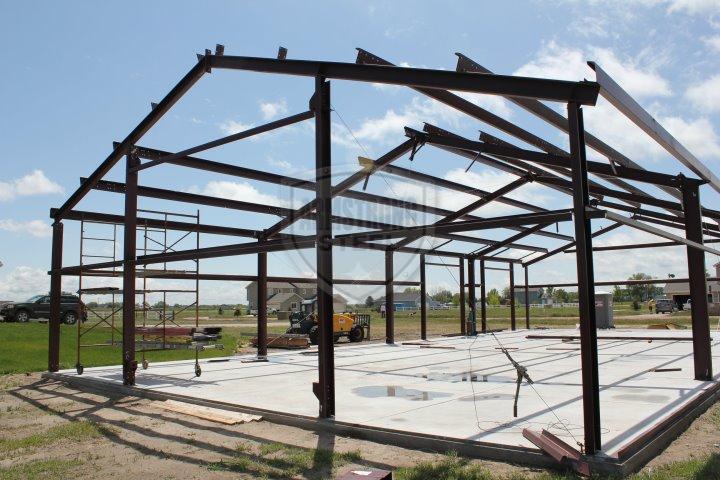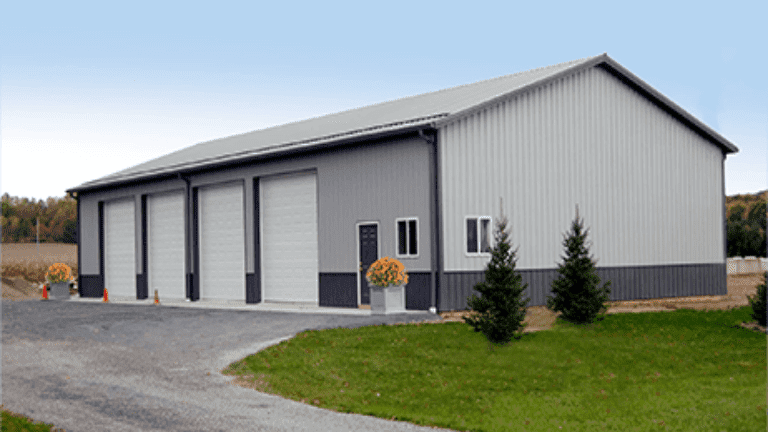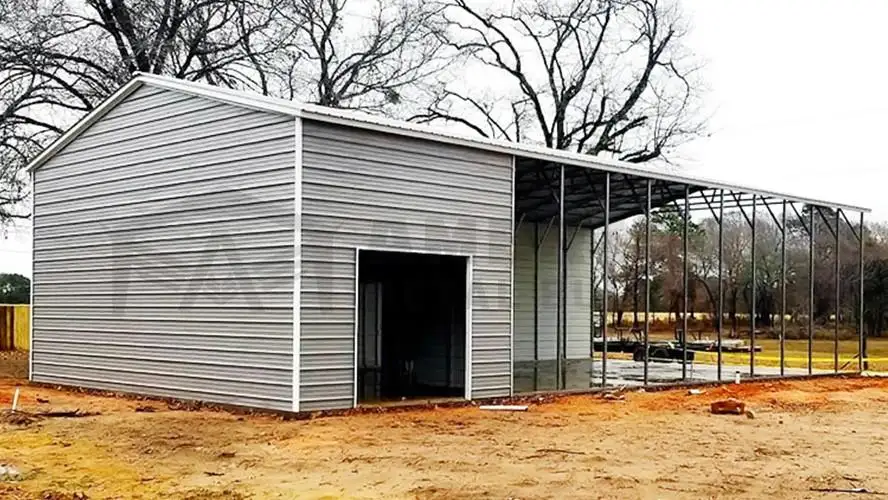The Competitive Benefit of Steel Buildings: Why Pick This Superior Alternative
Steel structures have emerged as a compelling choice in the world of building and construction for a multitude of reasons. The competitive edge that steel buildings hold expands far past their initial charm, making them a preferred alternative for those looking for durability and adaptability in their building jobs.
Durability and Long Life
In the realm of toughness, longevity and construction are basic elements that underscore the value recommendation of steel buildings. Steel is renowned for its effectiveness and capability to hold up against numerous environmental conditions, making it a perfect selection for lasting structures. Unlike typical products like timber or concrete, steel does not warp, crack, or rot in time, guaranteeing that a steel structure stays structurally audio for years.
One key element adding to the longevity of steel structures is their resistance to pests such as termites, which can create substantial damages to wooden frameworks. Steel is additionally non-combustible, reducing the risk of fire damage and enhancing the security of citizens. In addition, steel structures call for minimal maintenance compared to other construction materials, saving both money and time in the future.
Additionally, advancements in steel manufacturing technology have further enhanced the longevity of steel buildings by boosting deterioration resistance and architectural honesty. With correct treatment and upkeep, a sound steel structure can last well over 50 years, providing a trusted and durable service for numerous construction requirements.
Cost-Effectiveness
With its many financial benefits, steel as a structure product supplies an engaging cost-efficient solution for various building jobs. The cost-effectiveness of steel buildings comes from a number of key elements. First of all, the preliminary cost of steel might be higher than some traditional products, however the lasting cost savings are significant. Steel frameworks require marginal maintenance, lowering repair service and replacement expenses over time. In addition, steel is extremely sturdy, which equates to decrease insurance policy premiums because of reduced risk of damage from elements such as fire, insects, and natural disasters.
Furthermore, the building and construction procedure with steel is faster and a lot more reliable contrasted to other materials, bring about decreased labor prices and earlier project conclusion. Steel structures are also energy-efficient, enabling cost savings on cooling and heating costs. The flexibility of steel enables for simple expansion or alteration, saving money on future construction costs by removing the need for comprehensive renovations. Generally, the cost-effectiveness of steel structures makes them a smart financial investment for numerous construction requirements.
Flexibility in Style
The adaptability of steel as a building product permits a large range of innovative layout possibilities in building and construction projects. Steel buildings supply unmatched adaptability in layout, making them a preferred option for architects and home builders. Among see this page the key benefits of steel is its strength-to-weight proportion, which makes it possible for the building of big, open spaces without the need for extreme assistance columns. This structural efficiency enables creative and modern-day styles that may not be feasible with various other building products.
Steel's adaptability also enables customization to satisfy details design needs. Whether it's curved roof coverings, elaborate exteriors, or distinct geometric forms, steel can be formed to bring virtually any kind of design principle to life. Furthermore, steel buildings can be easily increased or customized, offering future adaptability for adjusting to changing requirements.
Its longevity and resistance to rust make certain that steel buildings keep their visual appeal and architectural honesty for years to come. Eventually, the convenience of steel in design not just boosts the visual appeal of structures but likewise adds to their longevity and capability.

Lasting Building Practices
Building upon the foundation of versatility in design, lasting building practices in steel buildings play an important function in mitigating ecological impact go to this site and advertising long-lasting environmentally friendly options. Steel is a highly lasting material because of its recyclability and toughness. When steel structures reach the end of their lifecycle, the steel parts can be reused and used in brand-new construction jobs, minimizing the need for raw products and decreasing waste. In addition, the power performance of steel buildings adds to sustainability efforts. Steel frameworks can conveniently accommodate insulation, solar panels, and other energy-efficient attributes, decreasing power usage and operational costs gradually. This not just profits the atmosphere yet also offers lasting expense savings for building owners.

Fast Building Timeline

Furthermore, the structured procedure of setting up steel structures lowers building time substantially. The simplicity of this contact form steel building layout and the convenience of assembly contribute to faster project completion, making it an optimal choice for clients with time-sensitive demands (steel buildings). In addition, the capability to deal with various parts simultaneously, such as site preparation and foundation building and construction along with steel fabrication, further increases the general building and construction timeline
Conclusion
To conclude, steel buildings offer an affordable benefit due to their resilience, cost-effectiveness, versatility in layout, sustainable building and construction methods, and quick construction timeline. These factors make steel structures a remarkable alternative for numerous construction tasks, supplying long-lasting benefits and worth. Choosing steel buildings can lead to enhanced performance, performance, and sustainability in the building market.
Unlike traditional products like wood or concrete, steel does not warp, split, or rot over time, ensuring that a steel structure continues to be structurally audio for decades.
The flexibility of steel as a building product permits for a vast variety of ingenious layout opportunities in building and construction projects.Building upon the structure of convenience in layout, sustainable building practices in steel buildings play an important function in mitigating environmental influence and promoting long-lasting environmentally friendly options. When steel structures reach the end of their lifecycle, the steel components can be reused and used in brand-new building projects, lowering the need for raw materials and lessening waste.In verdict, steel structures offer an affordable advantage due to their toughness, cost-effectiveness, convenience in style, sustainable building techniques, and quick building and construction timeline.